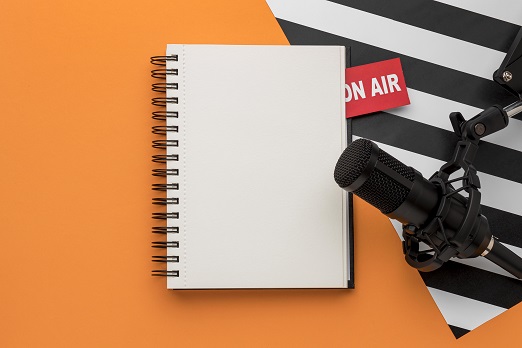How to Prepare for a Speech with 15 pieces of Advice. Enjoy your reading with a cup of coffee!
First, standing up in front of people is more than a theory. It is intertwined with the mentality and nurtured skills. There are so many public speaking tips spread over the internet, but people still find difficulties practicing them. Even surveys have said that public speaking has become the scariest thing people confront.
In many occupations, mastering public speaking is necessary. It is helpful for professional purposes: to stand out among the competitors, connect with new clients, and make an impression on industry leaders. Here, we have 15 public speaking tips to help you become a better presenter in the future. We don’t know whether it would be 100% helpful or not like the other tips. Let’s practice them!
How to prepare for a speech 1: Be strategic

Ontra tells us that presentations are not based on each separated slide but on how we convince our audiences interactively. Shortly, every time we prepare it, we need to think strategically. Please don’t focus on what will happen while we are speaking. Also, making a script to outline our presentation and ask ourselves for:
1. What do we want people to remember about our presentation later on?
2. What is the next step to take when we are done?
3. How can we build our audience’s trust?
The last one is important because the face-to-face interaction with eye contact gives more impression than any other form of communication. Ontra said, “If you lose them in your presentation, all your marketing efforts will be wasted. Plus, if you don’t gain trust, no matter what they read on the media, your audiences will ignore all of it.” By thinking strategically, we put ourselves in the right mindset to support overall marketing efforts and connect with the audiences.
How to prepare for a speech 2: Know the materials

According to Ontra, there is nothing worse than memorizing the presentation materials while speaking. “You have got to take a moment to know the content,” Ontra said. “If you can’t speak confidently with improvisation, people will know you are not the expert.” Suppose we fail to demonstrate our expertise, the audience will lose their interest before coming to trust our business. Understanding material doesn’t have to memorize a whole script. Instead, understand what we are trying to communicate by including:
1. The information we want to cover
2. The flow of the materials
3. The problem and the solutions
4. The goals of the presentation
5. Questions and answers
Ontra suggests familiarizing ourselves with the content to carry on without any stuff that we prepared. “If you were one-on-one in the elevator without a slide, how would you explain that slide to a person?” We need to answer that question for every portion of our presentation.
How to prepare for a speech 3: Capture attention

The first impressions of a presentation are critical. We need to capture our audience’s attention and convince them to listen to our presentation entirely in this situation. Taking time to prepare and know our material is the key to an engaging presentation, no matter whom we speak to or what topic we discuss. Make sure we are polishing our speaking and how we deliver the whole materials concisely.
Ontra suggests we use this tactic, “start your presentation with a short storytelling about your business, then relate that story to your audience.” Use something that triggers curiosity or something surprising. If we can imagine something, it will instantly help our audience relate to what we are saying. We can use Google as a helper when we are unsure where to start. We will always find something useful there.
How to prepare for a speech 4: Speak candidly

Once our audience pays attention, it will intimidate us into speaking persuasively and confidently, especially when we are nervous. We suggest picking one audience to talk about for ice-breaking to overcome this. But, never choose an audience who likes interrupting our speaking. Instead, pick a friendly face from the crowd and start to speak to that person. Then everyone will enjoy our performance enthusiastically.
Speaking as if we are talking to a friend, our presentation will naturally sound conversational, rather than memorizing and rehearsing our material. So, how can we speak well when delivering our prepared materials intensively? Please don’t read what is written on our slides. Instead, we can visualize the slides and imagine something that points us to talk about that spontaneously. Presentations are traditional storytelling. We are in if we can tell the story with a concise message and intense visuality.
How to prepare for a speech 5: Know the audience’s needs

Knowing the demographic of our audiences are imperative. If we speak in front of the audience, we know what they need. Even if they are our friends and families, entertain them. Otherwise, If they are corporate people, teach and inspire them.
As we prepare the presentation, we always need to bear what the audience needs, not what we can tell them. While giving the presentation, we need to focus on the audience’s response. Briefly, we only need to understand and respond well to our audiences.
How to prepare for a speech 6: 10-20-30 rules

Generally, the slides should be the benchmark for us. A good set of slides will be nothing without the presenter. Because of that, our slides should be minimalist rather than more information. Here are three tips from Guy Kawasaki. He suggests that slideshows should:
1. Consists of a minimum of 10 slides for the optimal number.
2. Give 20 minutes for our ten slides.
3. Contain no font smaller than 30 points to make it readable.
The last point is to stop yourself from putting too much information on each slide. If we need to show more details, create a handout and give it to our audiences before starting the presentation. This approach avoids ‘Death by PowerPoint.’
How to prepare for a speech 7: Practice in front of the mirror

Speaking in front of a mirror is an excellent way to practice gestures, hand usage, and expression. The only way to get better for them all is consistency. Rehearsing is good, but we will find a different atmosphere when doing it for real in front of them.
Don’t let our first presentation be a disaster. Practicing our presentation multiple times can get us familiar with the order, transitions, and content to get more confident. Feeling ready to speak will eliminate up to 80% of any fears.
How to prepare for a Speech 8: Maintain physical and mental health

If we have the time, let’s do some exercise. It can reduce our stress and anxiety after having a good workout. We need a fit condition before performing our presentation. We can run or swim, for instance.
Outside we prepare our physical health. We also prepare for good mental health. Find the right time during the days before your speech to go somewhere alone or hang out with friends. Refresh your mind first to reduce anxiety.
How to prepare for a speech 9: Manage the time wisely

Please plan to arrive early, so we don’t have to be stressed with traffic, find the building and the room. If possible, survey the place we plan to go to a few days before to ensure the right location and arrange everything we need.
After that, practice our presentation to finish at least 10-15% shorter than the time allocation. This extra time allows us some flexibility to prepare Q&A sessions. Also, don’t let Q&A sessions go on too long. If we doubt speaking too much, go back with the time allocation. Again, practice and practice.
How to prepare for a speech 10: Speak more with less

Remember to simplify our complex message, so our audiences can understand what we are saying. They may have different expertise, experience, and various fields. If we confuse them and talk over their head, we are wasting their time because they won’t understand our message. Even if there are many audiences with the same occupation, we need to break down the acronyms, jargon, and complicated terminologies.
As a presenter, we must focus on the details and avoid complexity to make your message point out the essence. Thinking carefully about your subject and your audience previously will help you create a compelling presentation. When you prepare a presentation, you have to think like an artist; the statue’s beauty is shown by what is captured. Like Steve Job said, “That’s been one of my mantras: focus and simplicity. Simple can be harder than complex. You have to work hard to get your thinking clean to make it simple. But it’s worth it in the end because once you get there, you can move mountains.”
How to prepare for a speech 11: Choose proper words

What we say and the words we choose are matter. If audiences doubt our meaning, they will come back to grasp the words we use and double-check the purpose. Therefore, it is essential to choose the words carefully, especially when saying something important. Considering these things for:
1. Think about our audience’s occupations to understand the subject and the type of language we use.
2. Use shorter sentences to create urgency.
3. Simplify words to avoid complicated explanation
Instead of non-verbal communications as a part of our overall message, our body language also creates strong messages.
How to prepare for a speech 12: Know the voice

Most of us are not realizing our voices and these feelings are normal. “Do I sound like that?” Let’s develop a better understanding of our voice. Often people don’t like the sound of their own recorded voice. In the same way, some people don’t like photographs of themselves because they can feel embarrassed.
The more we listen to our voice, the easier it is to do it for real. In conversational mode, individuals tend to speak in short phrases. By knowing our agent, we will learn more about fluency.
How to prepare for a speech 13: Learn vocal productions

The voice can represent our personality and emotional state. For instance, when we are nervous, it may be shown by hesitancy in our agent. Secondly, a shy person may speak quietly, but someone confident will have more freedom to speak. So here are the three core elements of vocal production to become an effective speaker in public:
1. Use a diaphragm to adjust the volume to sound neither too loud nor too slow.
2. Open the jaw and the mouth to have good articulation.
3. Use vocal variety to achieve good speech, such as pace, volume, emphasis, and pause.
Some individuals are more relaxed in a private situation without conforming to other social rules and expectations. This situation is different in a public place when there are influences upon the way people speak. So, it is essential to fit our voice based on the case.
How to prepare for a speech 14: Speak with a gesture

Over 50% of communication considerably uses non-verbal. There are voices, speed, and emphasis, for instance. However, our body language is also essential. Our gesture includes how we stand, our facial expressions, hands to emphasize speech, and eye contact.
In this case, the most critical aspect of effective communication is coherence. Our words need to be reinforced by non-verbal communication for effectiveness. Both must say the same thing. Non-verbal communication is more problematic to cover up than verbal. If we know someone’s gesture that gives different messages from their words, we should focus on non-verbal communication first as it reflects the total views.
How to prepare for a speech 15: Breath, relax and smile

If we want to engage the audience correctly, make sure they hear what we say. Slow it down. It sounds easy, but surprisingly some of us fail to do it since we feel hard to calm down when nervous.
Worry not. Let’s start to breathe. We can inhale deeply and exhale slowly, trying to relax. Make sure that we continue to live occasionally during the presentation. Don’t forget to smile and make eye contact to build intimacy. It helps the audience to connect with our topic. Besides, It also reduces our anxiety. We talk to individuals, not a mass of strangers.
See also:
Introvert vs Extrovert Presenter, Which One Are You?
Most Wanted Jobs During COVID-19
Question and Answer Session: The Most Important Elements of a Presentation
To end up
When you can speak confidently in front of them, you make it. By following the public speaking tips above, your presentations will improve significantly, and so will your confidence. Again, if the audience can’t take their eyes off you, you successfully win their hearts. Could you do your best, and I wish you luck?
Let’s visit RRSlide to download free PowerPoint presentation templates with many categories. But wait, don’t go anywhere and stay here with our Blog to keep up-to-date on all the best pitch deck template collections and design advice from our PowerPoint experts yet to come!





